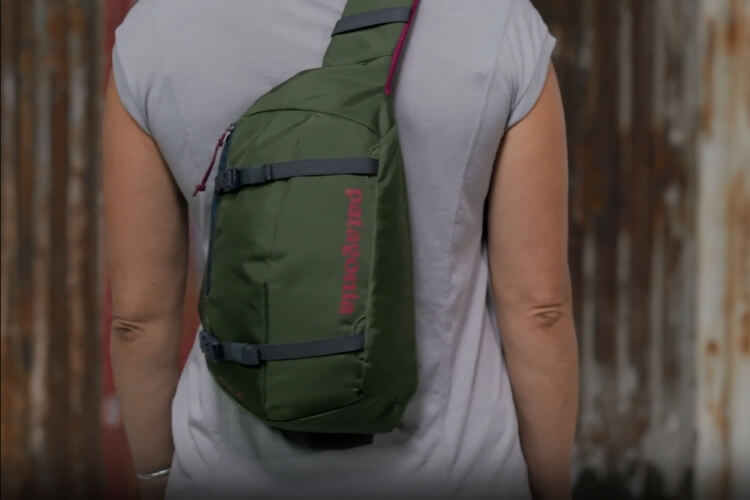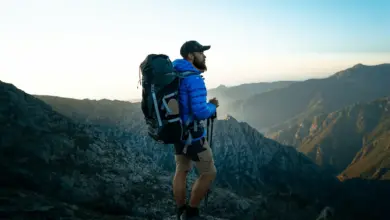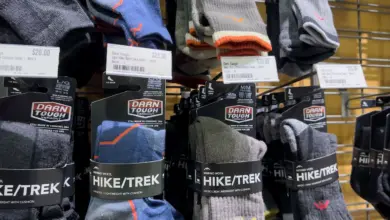Hiking Without a Backpack: 3 Pack Alternatives
Hiking Without a Backpack
You might be wondering if you can go hiking without a backpack. You might not have a backpack or you might want to go hiking with a shoulder injury. Either way, I’m going to share with you some tips for hiking with a backpack and backpack alternatives to keep the load off your shoulders.
Do you need a backpack for hiking? For hikes that are short, safe, and well-marked, carrying a backpack is not required. A backpack for longer, more demanding, or poorly marked trails is recommended.
Do You Need a Backpack for Hiking?
Whether or not you need a backpack for hiking depends on the type of hike and your experience and fitness level. Generally speaking, if you are doing a short hike on a familiar trail, then you can get away without a backpack.
Backpacks serve the purpose of carrying extra gear that you may need, such as extra clothing, food, water, flashlights, and medical supplies. If you’re doing a nature walk when there’s less chance for error, then it’s probably fine. These are usually hikes that are only a few miles long on well-marked trails in fair weather.
But if you are doing anything more than a few miles, it’s important to bring hiking essentials like food, water, a rain jacket, a headlamp, and a first aid kit. For long hikes or hikes in diverse weather, bringing extra layers and first starters is important.
Why You Might Have Backpacking Shoulder Pain
Even if you have healthy shoulders, you can still experience pain when backpacking if your pack isn’t fitted right. Even light loads over long distances can strain your back with the wrong fitting.
Every pack and body type is different. What I like to do to get a pack fitted is to bring it to my local outdoor outlets like REI or EMS. The professionals there will be able to measure and fit you correctly. If you have long-term pain, consider seeing a doctor or physical therapist.
Thankfully, there are a lot of backpack alternatives out there for hiking. These solutions are quite varied and some of them admittedly look a little goofy, but trail guys can be a little weird too 🙂
You may also like Complete Guide to Backpacking Snow Shovels
Hiking Shoulder Bag
Out of all the solutions listed here, the hiking sling bag, shoulder bag, or cross bag, is one of the more normal-looking bags. If you are hiking with one bad shoulder, the sling bag might be a good solution. The bag slings over one shoulder, leaving the other should free.
These are small packs, usually in the 6-8L capacity, but there are some tactic shoulder bags that hold as much as 20L. If you are used to traveling light and only want to carry only the essentials, then a hiking shoulder bag could get the job done. There’s enough space for a rain stash jacket, snacks, water, and other emergency essentials.

The Patagonia Atom Shoulder Pack holds 8L and is one of the more popular hiking shoulder bags on the market. It’s fairly water-resistant and comes in 10 different colors. Check it out on Backcountry.com.
If you’re looking for a more affordable sling bag, then the MOSISO Sling Backpack might be perfect for you. Check it out on Amazon.
Lumbar Packs
Another great option to keep your shoulders free is the lumbar pack. Lumber packs for hiking are basically waist packs with shoulder straps. People with limiting shoulders or backs wear these packs because it takes the load away from those areas and direct it to the waist and lower back instead.
Some lumber packs come with shoulder straps, while some sit on the waist entirely. These packs usually have a higher gear capacity than shoulder bags, around 10-12L, though 20L lumber packs are also available. Lots of mountain bikers and hunters wear these packs as well to prevent their backs from getting hot and sweaty
One of the best lumbar packs for hiking on the market is the Mountainsmith Day Pack (find it on Amazon or REI). This day pack holds up to 13L and comes with everything you would expect from a normal pack. The back is made from rigged EVA back panel padding for secure fit and removable shoulder straps.
You may also like How to Attach and Use the Bungee Cord on Your Backpack
The shoulder straps are especially great if you want to carry extra loads or remove them to keep your shoulders completely free. You even have the option of using only 1 shoulder strap as well. Oh, and it even comes with a lifetime warranty.
If you’re looking for something more economical but still great quality, check out the BP Vision Outdoor Fanny Pack (see the price and reviews on Amazon). The pack is smaller than the Mountainsmith pack but comes with a lot of features.
Dixon Roller Pack
If you’re looking to carry a lot of weight and want your back and shoulders completely free, then the Dixon Roll Pack might be just what you want. This is the most unconventional of all the options listed here, but this unit lets you pull along 75 lbs using half the effort you normally would.
The Dixon Roller Pack works similar to pulling a sled, but instead of skis, there is one big wheel that rolls over rocks, roots, and uneven terrain. There are a lot of hiking backpacks with wheels, but the Dixon Roller Pack seems to be the only one that’s still in business.
You may also like How to Attach Sleeping Pad to Backpack
Conclusion
For some hikes, you don’t need a backpack, but when you do want to carry gear, there are a variety of ways to keep your shoulders free. Hiking shoulder bags and lumbar packs are one of the easiest solutions. Unfortunately, they aren’t good for long or overnight trips. If you do want to carry more gear, consider getting a Dixon Roller Pack.



